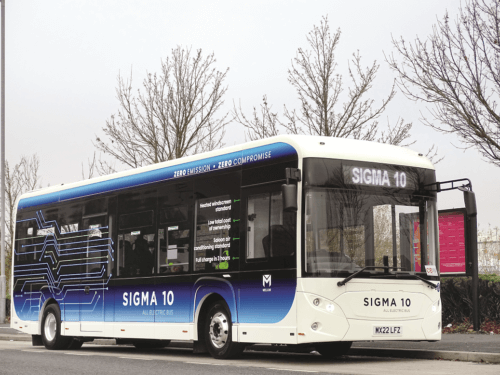
Rochdale-based coachbuilder Mellor announced significant developments in its business this time last year with the new Sigma zero-emission bus range. Richard Sharman takes a look at one of a series of new arrivals, the Sigma 10
If you have been in or around the bus industry for a long time you will know that Mellor is a well respected name when it comes to developing and producing high quality minibus-sized vehicles that cover a vast range of uses in a number of different sectors, from council and community transport providers to big bus groups, and that is where this story starts.
Strata LF
Mellor is no stranger to producing low-floor minibuses, but the introduction of the Strata LF back in July 2016 was to set the scene for the coming years which would see a decline in passenger numbers and the need for small operators and big bus groups alike to look for options to replace medium and full-sized services buses with something cheaper to run and more capable of navigating rural roads and housing estates with cars parked everywhere.
[…]By subscribing you will benefit from:
- Operator & Supplier Profiles
- Face-to-Face Interviews
- Lastest News
- Test Drives and Reviews
- Legal Updates
- Route Focus
- Industry Insider Opinions
- Passenger Perspective
- Vehicle Launches
- and much more!


